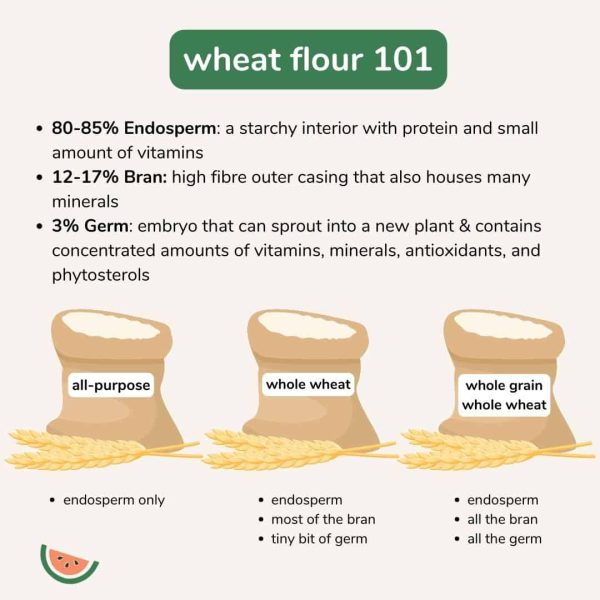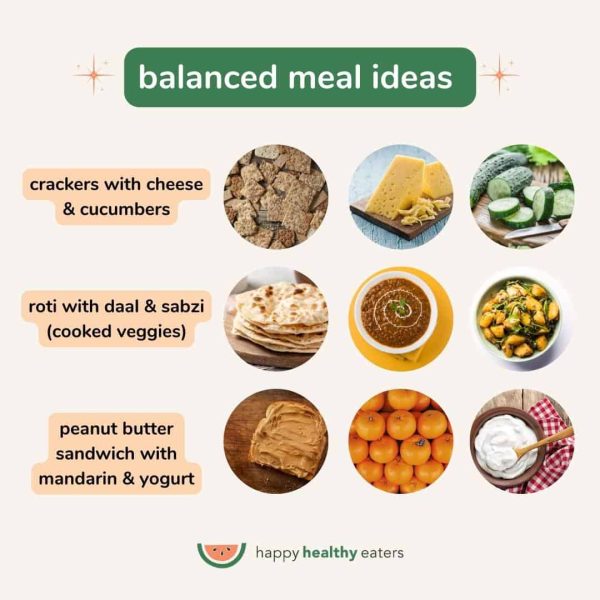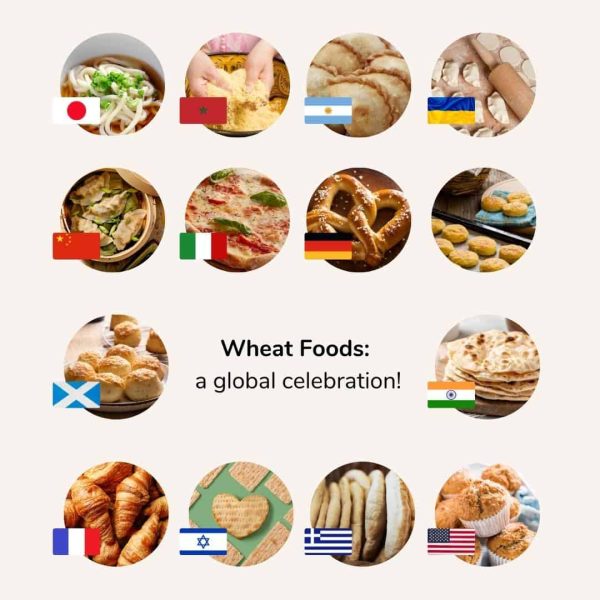Pasta, bread, crackers, bagels, waffles, cookies, noodles, pizza – does it sometimes seem like all your kid wants to eat are “beige” foods?
If so, you’re not alone!
Tons of parents come to us concerned that their toddlers aren’t getting the nutrition their little bodies need because they’re manifesting this huge drive for wheat-based foods. To add to this, parents get mixed messages about carbohydrate based foods including wheat and as a result feed from a place of fear. We don’t want that. We want you to feel empowered and feed from a place of confidence.
Today we’re going to take a deep dive into this topic. We’re going to look at:
- Why this phenomenon is so common (hmm, maybe there’s a physiological reason for it!)
- Childhood growth patterns
- Nutrients found in wheat
- How wheat fits into a balanced diet
- Wheat around the world
Why Are Kids So Drawn to “Beige Foods?”
Trust us, you’re not alone in this – parents around the world experience this phenomenon with their children, and in particular, with their toddlers. Between 9 to 18 months there’s a transitional period where children begin to assert their preferences, and this typically includes carbohydrate-based foods that are staples in the family diet.
Since your child was a baby, there were likely a few staple wheat-based foods you routinely served, and so it’s natural for toddlers and children to want to enjoy these foods. These food experiences were likely a positive memory and their brains want to repeat the experience.
For many children, beige coloured foods elucidate a felt sense of safety and as we deepen our understanding of responsive feeding, we know that safety is an important consideration for children who are learning to eat new and familiar foods.
A huge driving factor why children are drawn to beige foods is taste. Think about it: pancakes, waffles, breads, buns, croissants and noodles have a similar flavour profile and the taste is predictable. Additionally, some of these foods can be sweet tasting and children are biologically driven to enjoy sweet tasting foods. Furthermore, unlike vegetables, these foods are certainly not bitter. The bitter taste of foods can be unpleasant for children, and this is why we see children (and adults) struggle with vegetables.
Another reason; accessibility. Wheat-based foods are accessible around the world and at current times when families are mindful of food costs, children often know that they will have access to these foods at home. Think about it: how many wheat-based foods do you have in your home? We’re certain you could find at least a dozen!
Lastly, children are driven to eat carbohydrate rich foods because they serve as a fuel source for their active, growing and developing bodies. You might notice during periods of growth spurts your child wants extra bread or double the pancakes! To better appreciate this, let’s look at childhood growth patterns.
Childhood Growth Patterns
We’ve all heard the phrase: children grow up fast! And it’s true. Children have periods in their life where there is rapid growth. During these times it’s critical for them to meet energy requirements to attain maximum growth potential. If they don’t, we risk optimal childhood growth and development.
Between birth and age 2, babies and toddlers grow a lot. Most babies are working towards tripling their birth weight in the first year of their life. The average baby gains 15 lbs in the first year, then only 5 lbs from 12-24 months!
While growth slows down, toddlers are incredibly busy. If you have a toddler, there’s a good chance you know this by now–their curiosity for the world, new found movement and general go-go-go nature is a force to be reckoned with!
Fun fact: A toddler learning how to walk will take around 2000 steps per hour. To put that into perspective the average adult takes 4000 steps per day.
In order to fuel this active lifestyle, children naturally lean into carbohydrate rich foods since these foods offer the preferred energy source for their body – glucose!
And when you add a growth spurt to the mix, you can just imagine how much more energy they need!
Key Nutrients Found in Wheat
Wheat foods (pasta, bread, pizza, etc) have a reputation of being “pure” carbs but they actually contain a lot more nutrition than that!
Of the 40+ nutrients kids need to grow, develop, run, and play wheat provides at least 23.
Notably wheat is a good source of:
- iron, needed to make hemoglobin, a component in blood that transports oxygen to all the cells in the body
- protein, to build muscle and form hormones and brain chemicals (among many other functions!)
- B vitamins, required for the body to use its energy stores
- and yes, carbohydrates, the body’s preferred fuel source! Since toddlers are always on the move, they need that fuel.
And when we’re talking about whole wheat, then we can add these to the list:
- fibre & prebiotics, helpful for promoting a healthy gut
- vitamin E, a powerful antioxidant and needed for immune function

Let’s look at a real-life example:
A 1 cup bowl of whole wheat macaroni has (Canadian Nutrient File):
- 8g of protein (about 60% of a toddler’s daily needs)
- 39g of carbohydrates (needs vary but carbs should provide about 50% of their energy needs)
- 5g of fibre (20% of a toddler’s daily recommended amount)
- 1.7mg iron (about 25% of a toddler’s daily recommended amount)
- 1.2mg zinc (40% of a toddler’s daily recommended amount)
- B vitamins (20-50% of a toddler’s daily recommended amount)
- 0.44mg vitamin E (10% of a toddler’s daily recommended amount)

How Wheat Fits Into a Balanced Diet
As you can see, wheat provides many of the core nutrients a child needs! But, there isn’t one single food that provides all of the required nutrients, which is why it’s important to include other foods at the table. For example, wheat is not a significant source of calcium or fat and it has no Vitamin C.
Here are some ways you can include wheat food as part of a balanced meal or snack:
- crackers with cheese and cucumbers
- pizza with mozzarella, toppings of choice, and romaine salad (ribs for toddlers)
- pasta dressed with butter, served with peas and a glass of milk
- roti with daal and sabzi (cooked vegetables)
- peanut butter sandwich with a mandarin orange and yogurt
If you notice that your child regularly avoids eating produce or high calcium foods, then you may want to connect with your healthcare provider or local Registered Dietitian for an individualized plan to ensure your child is getting the nutrition they need.

Wheat Around the World
Wheat has been consumed for millenia. It’s thought to have originated in the Middle East but is now grown around the world, much of it in Canada.
Something we find special is that Canadian wheat is grown here in abundance by family farmers and shared with the world–it’s true, Italian’s love our wheat for pasta and the people in Japan love it for their noodles.
In fact, most global cultures have beloved wheat-based products.
Here are a few examples of wheat based foods from around the world:
Japan: udon noodles
Morocco: couscous
Latin America: empanadas
Ukraine: pierogies
China: dumplings
Italy: pasta and pizza
Germany: pretzels
North American Indigenous People: bannock
Scotland: scones
India: naan and roti
France: croissants
Israel: matzah
Greece: pita
United States: muffins
… and the list could keep going!

Did you feel a wave of nostalgia reading this list? Wheat forms the basis of many beloved food traditions.
We hope that if there are any wheat-based foods in your cultural cuisine that you’ll be excited to pass that food heritage on to your children. Rest assured that wheat not only nurtures their souls but serves as fuel and nutrition for their growing bodies too.
What About Wheat is a valuable resource to learn more about the nutrition found in wheat, the role wheat plays in gut health, and (possibly our favourite) Canada’s wheat story! Go read more about wheat!






